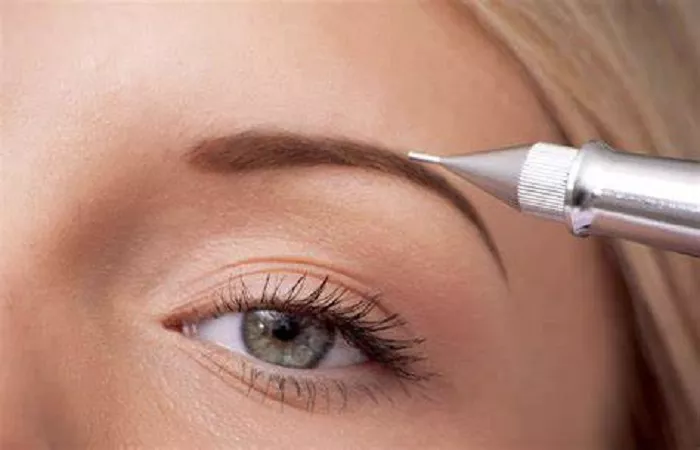Immediately after getting eyebrow tattoos, your skin enters a state of physiological shock. Microscopic channels created by the tattoo needles trigger an immune response, flooding the area with white blood cells and platelets. This initial reaction manifests as pronounced swelling, mild bruising, and a warm, tender sensation—all normal signs of the body’s defense mechanisms kicking in. The pigmented area will appear darker and more defined, a result of ink saturation and epidermal trauma.
Blood and Plasma Exudate
Within hours, a thin layer of blood-tinged plasma seeps from the puncture sites. This fluid contains essential clotting factors and antibodies, forming a protective barrier over the wound. While it may appear concerning, this exudate is crucial for preventing infection and initiating the healing cascade. Avoid touching or wiping this layer, as it acts as a natural bandage.
The Peeling Phase: Days 3–7
By the third day, your body enters the proliferative phase of healing. New skin cells begin to regenerate beneath the damaged epidermis, pushing the old, ink-laden cells to the surface. This process triggers the characteristic peeling, often described as “scaling” or “flaking.”
Texture Changes
The brow area may feel tight and itchy as the dead skin separates. Resist the urge to pick or peel; doing so can dislodge the ink prematurely, causing uneven color retention. Instead, gently moisturize with a sterile, tattoo-safe balm to soothe discomfort.
Color Fading
As the outer layer sheds, the tattoo will appear lighter and patchy. This is a natural part of the process; approximately 30–40% of the initial pigment will fade during this stage. The remaining ink will gradually blend with the new skin, revealing the final color.
Deep Tissue Healing: Weeks 2–4
Beneath the surface, a more complex process unfolds. Collagen fibers begin to restructure, strengthening the damaged dermis and reducing inflammation. During this period:
Swelling Subsides
By the second week, most of the visible swelling should resolve, leaving only mild tenderness. The skin may still feel slightly raised or bumpy, but this will smooth out as collagen production continues.
Color Stabilization
The tattoo will regain some of its vibrancy as the new skin fully matures. However, the final color may not fully develop until 4–6 weeks post-procedure, as deeper layers of ink continue to settle.
Full Recovery: Month 1–3
True healing extends beyond surface-level repair. It takes 3–4 months for the skin to fully regenerate and for the immune system to stabilize its response to the foreign ink particles. Key milestones during this period include:
Complete Epidermal Regeneration
By the end of the first month, the epidermis should be fully intact, with no visible signs of peeling or dryness. The tattoo will have reached approximately 80% of its final appearance.
Ink Integration
Over time, the body encapsulates the ink particles in a protective layer of collagen. This process, known as tattoo encapsulation, ensures the pigment remains stable and prevents further immune reactions.
Factors Affecting Healing Time
Several variables can impact your brow tattoo’s recovery:
Skin Type: Oily skin may retain moisture longer, increasing the risk of infection, while dry skin may experience more pronounced peeling. Sensitive skin types may require additional care to minimize irritation.
Aftercare Regimen: Proper cleansing, moisturizing, and sun protection can significantly speed up healing. Conversely, neglecting aftercare instructions can lead to complications such as infection, scarring, or color loss.
Pigment Quality: High-quality inks formulated for cosmetic tattoos tend to integrate better with the skin, reducing healing time and improving long-term results.
Maintaining Your Brow Tattoo Post-Healing
Once fully healed, your brow tattoo requires ongoing maintenance to preserve its appearance:
Sun Protection: UV rays can cause ink degradation and premature fading. Apply a broad-spectrum sunscreen with at least SPF 30 to your brows daily, especially during outdoor activities.
Gentle Cleansing: Use a mild, fragrance-free cleanser to remove makeup and dirt without stripping the skin’s natural oils. Avoid abrasive scrubbing or harsh chemicals.
Occasional Touch-Ups: Most brow tattoos require a follow-up session 6–12 months after the initial procedure to refresh the color and address any unevenness.
Conclusion
Eyebrow tattoo healing is a multi-phase process that demands patience and proper care. By understanding each stage of recovery and following professional aftercare guidelines, you can ensure a smooth healing journey and achieve long-lasting, beautiful results. Remember: a well-cared-for brow tattoo not only enhances your appearance but also becomes a testament to your skin’s remarkable regenerative capabilities.
Related topics

